Ben Wei
Oceanside
When and where did you start bodysurfing and do you still bodysurf regularly?
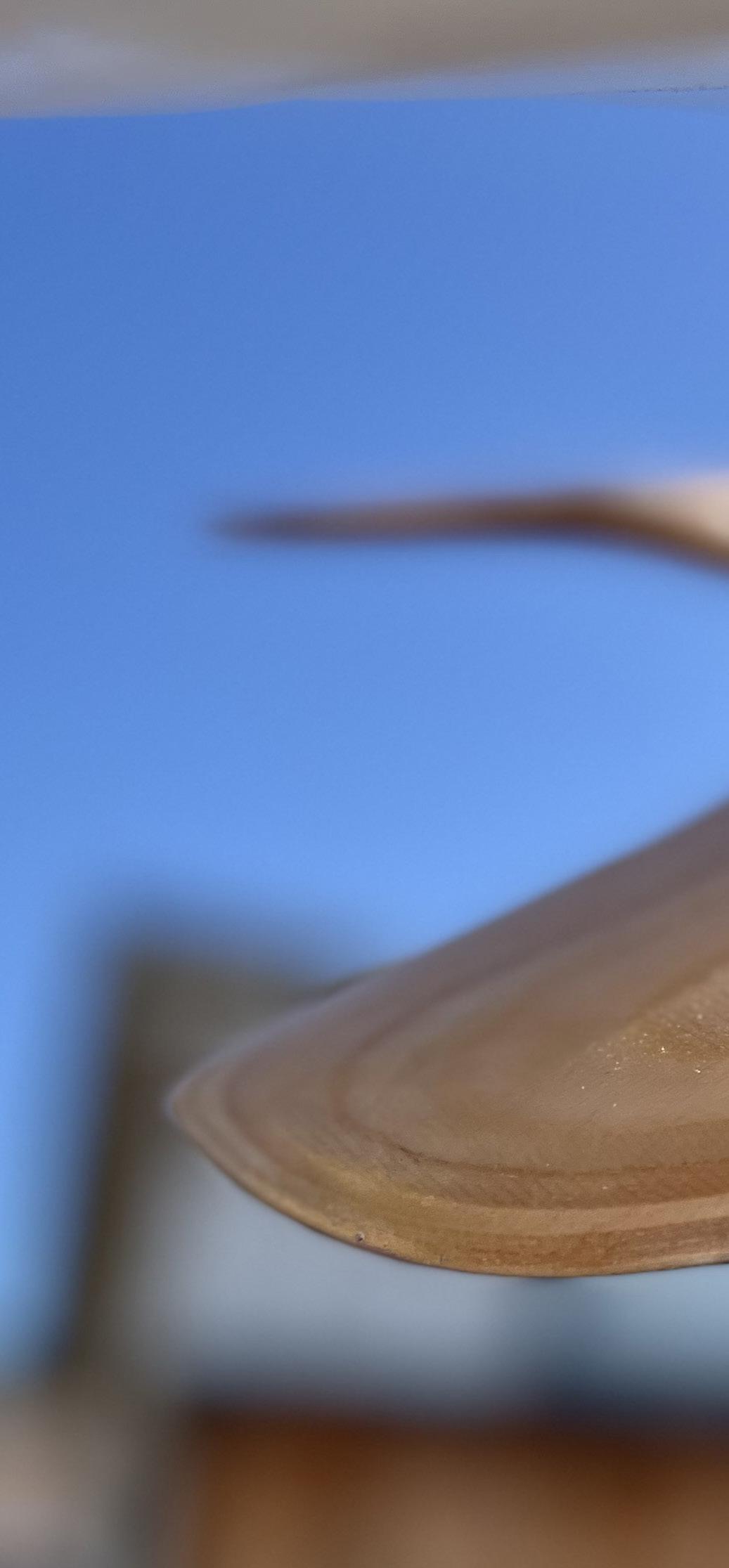
I got into bodysurfing when I was twelve out of necessity. I was getting into surfing, and bodyboarding when I first moved to Oceanside.
On a big south swell I was on the bodyboard and on a big set I couldn’t sink the board and got slaughtered and rolled under water, which traumatized me for weeks, and I didn’t want to go into the ocean.
I started to get hungry to get into the water again, but didn’t want to have the same experience, so I decided to cut my bodyboard down to about 1/8th the size, using a steak knife, and made a pocket for my hand to grip, all the way down to having slots in the pocket for my fingers.
I took one of the two screw on fins and put a center fin behind my grip area. With the re-shaped foam handplane, I was finally able to go way under the impact zone and get out unscathed.
The riding was just as fun, if not more fun, and it made me fall in love with bodysurfing.
What’s the bodysurfing scene like in Japan and are there good waves for it there?
In the beginning I was living in Chiba, right across the street from the Tokyo 2020 Olympics beach. I didn’t see anyone bodysurfing, just board surfing, and bodyboarding.
The opposite side of the Jetty from the Olympics beach is a super shallow and hollow wave, on a sand bank that usually closes out, but sometimes reels tubes with north swells and a head on south/ side offshore wind.
4 Bodysurfer Magazine
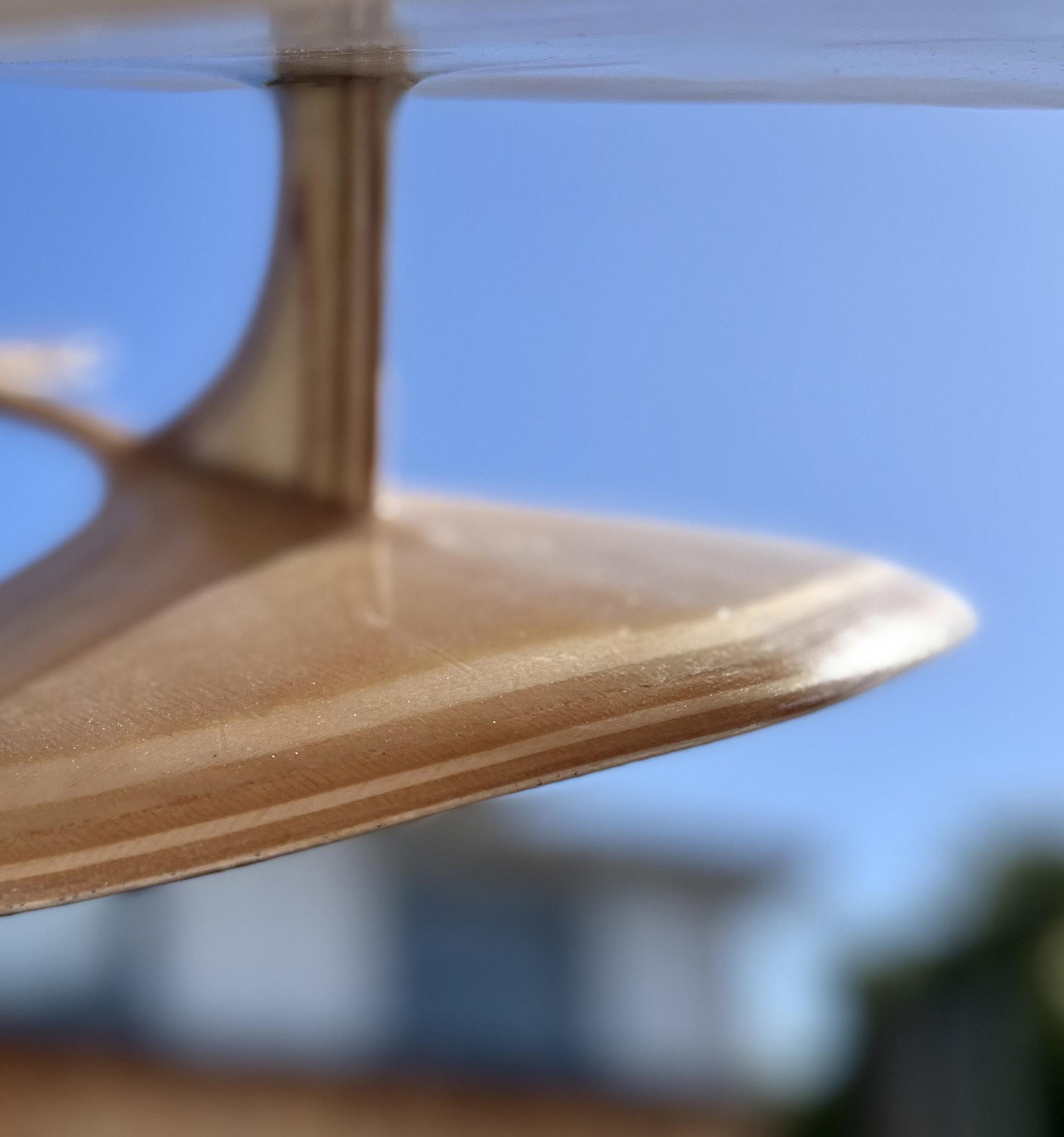
BEN WEI - HYDROFOIL @ BENWEI5050 www.bodysurfermagazine.com 5
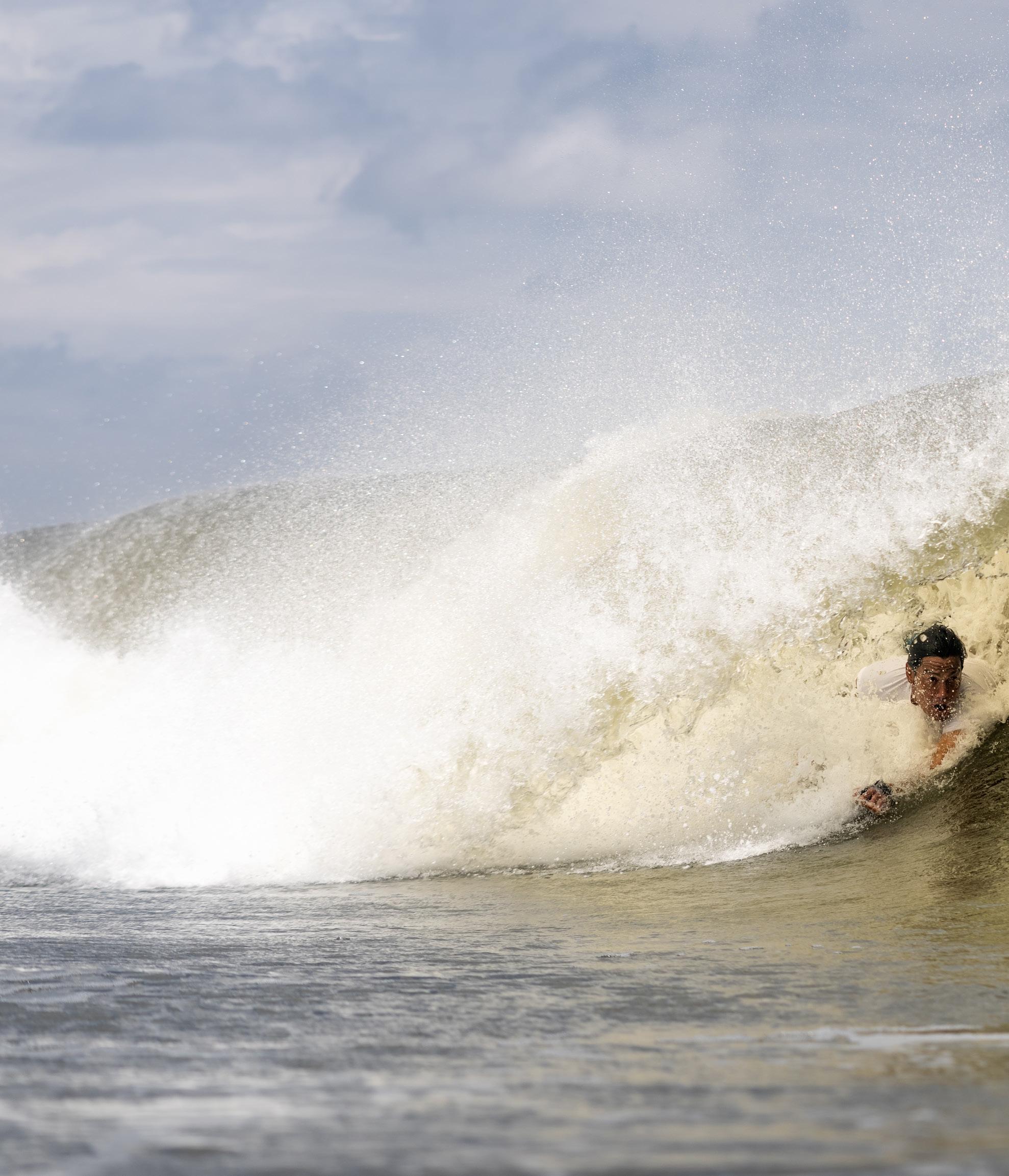 BEN WEI
BEN WEI
6 Bodysurfer Magazine
PHOTO: SEAN EVANS @ WATERWORKMEDIA
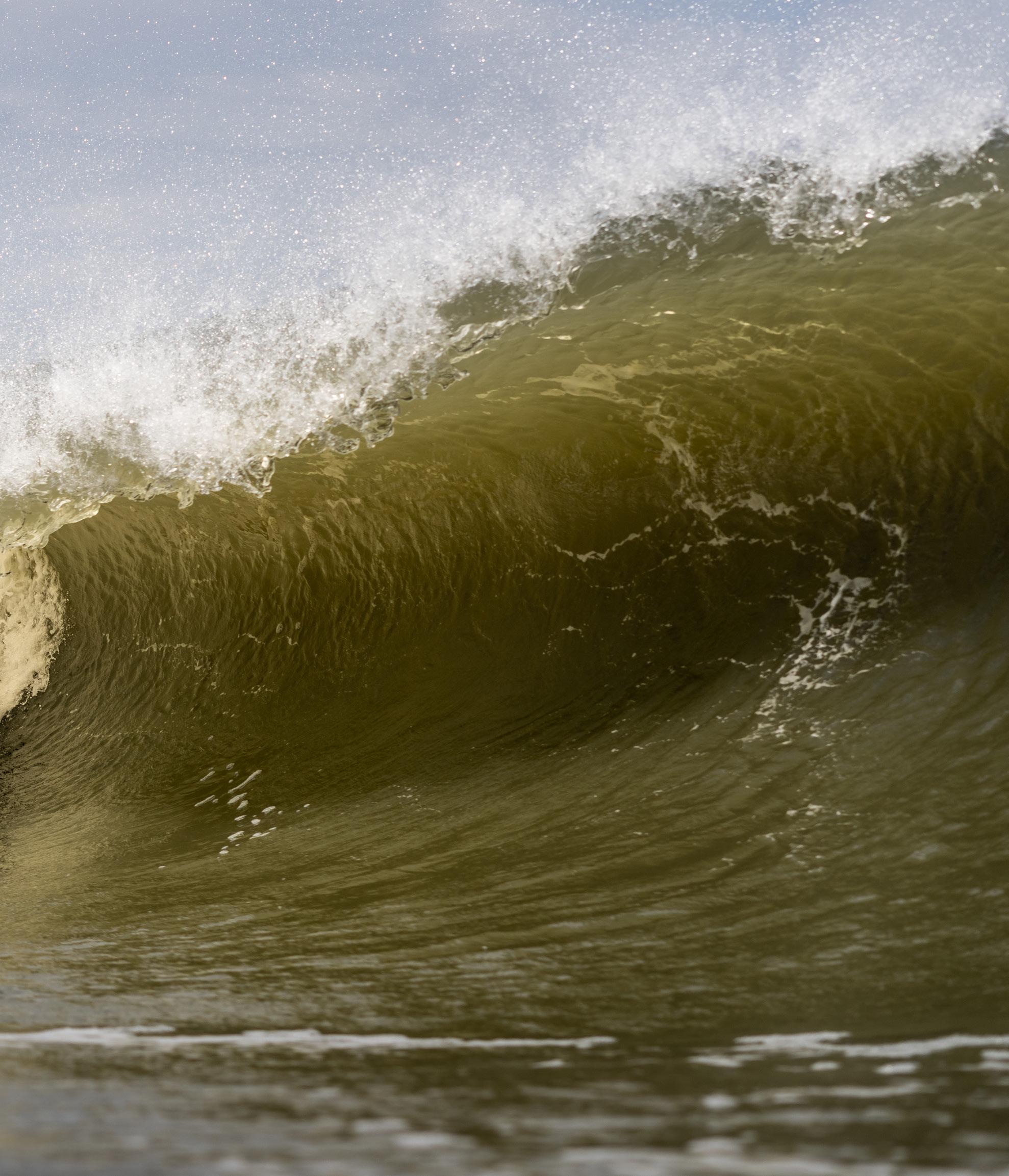
www.bodysurfermagazine.com 7
Nobody board-surfed there, so it was my peaceful escape zone from the crowds.
There’s another amazing shorebreak spot called Ura-Izumi close to the surfboard factory that has to be one of my favorite bodysurfing spots in the world.
Friends on the other side of the Tokyo bay in Shonan, run the Japanese Bodysurfing Association, and have some members on the community, but it’s not widely popular.
You’ve travelled widely, have you discovered any lesser-known areas/countries etc) or Communities of bodysurfers?
One surprisingly strong bodysurfing community is in El Salvador. Almost all of the lifeguards bodysurf at a high level, and a few make their own wooden handplanes.
There’s a gnarly hollow beach break in El Zonte that they call “Bitcoin Beach” where they run bodysurfing championships.
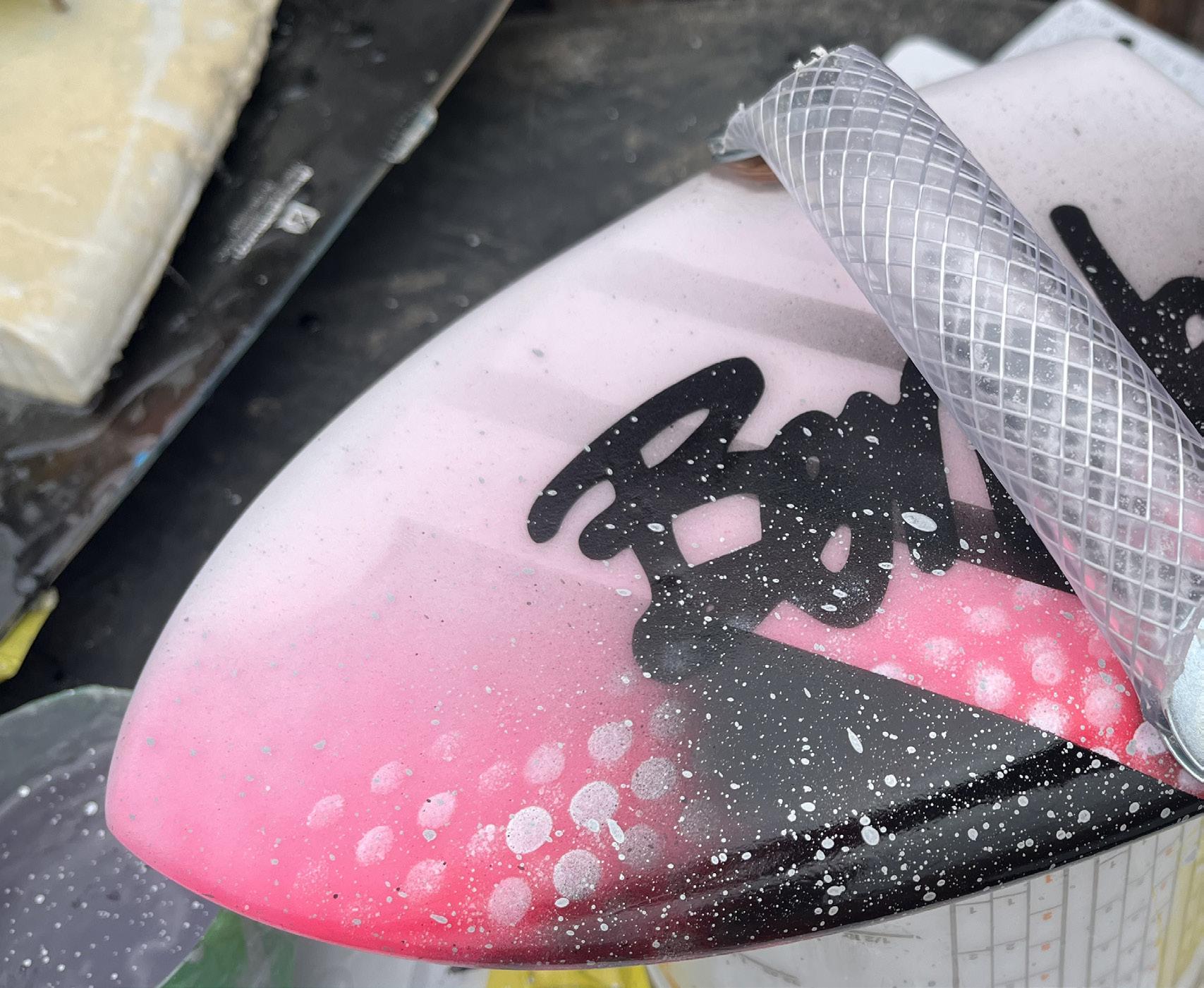
8 Bodysurfer Magazine
BEN WEI @ BENWEI5050
What got you into shaping handplanes? Was it a natural sideline to the surfboards or more of a personal interest/passion?
My surfboard shapes are primarily super-short alternative boards called Waveskates. They require a bigger foam blank to achieve the thickness and width required to make up for the short lengths. I end up with about a foot of off-cut foam from each board.
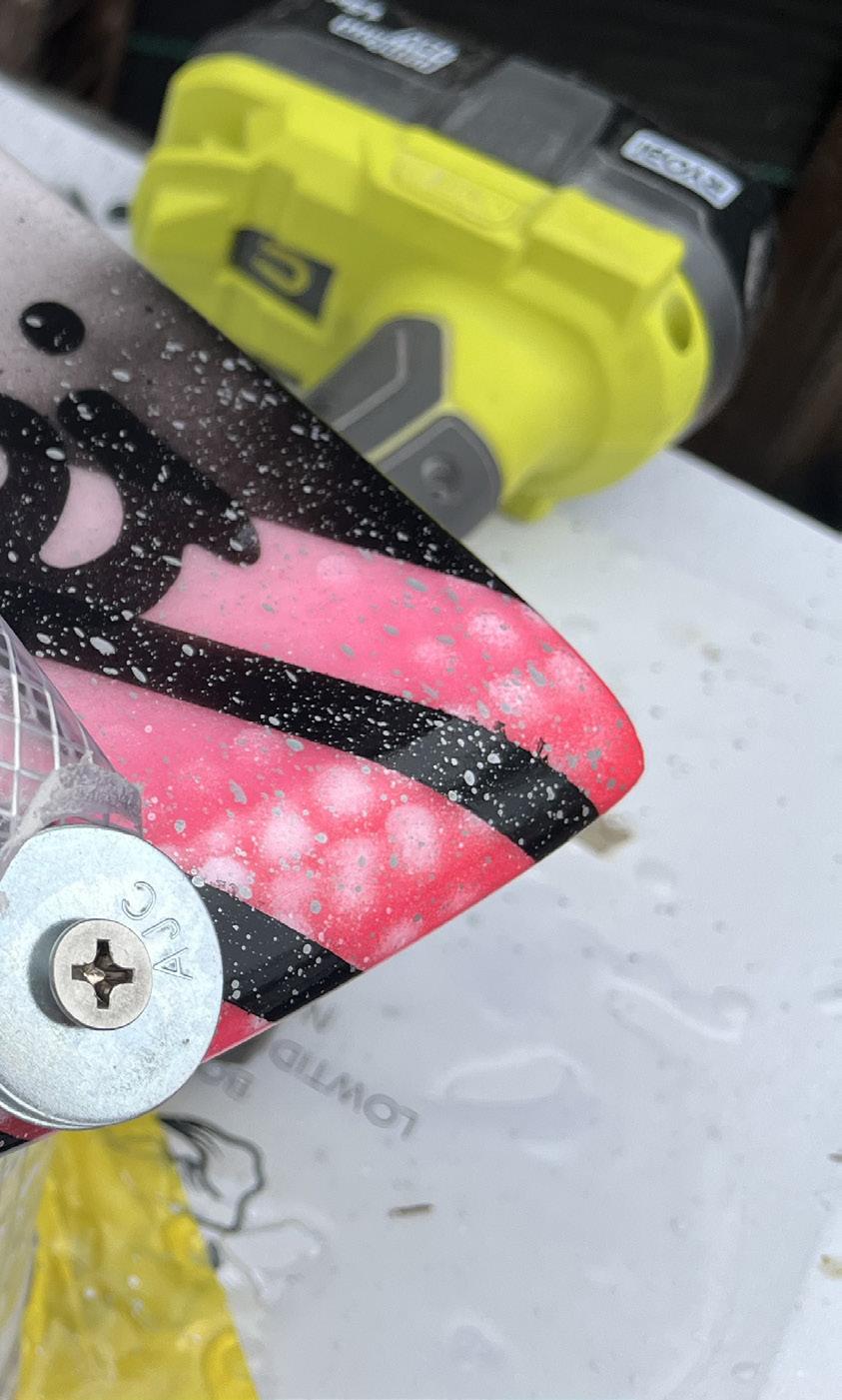
This provides a perfect amount of length for handplanes and two-handed paipos.
It allowed me to test a variety of new ideas and features in miniature size, and make myself new boards all the time virtually free of charge.
The size of the handplanes also fits within the fiberglass off-cuts as well and can be laminated with leftover resin from the surfboards.
So the best materials in your opinion are traditional foam and resin?
For durability I like the wood planes, they also sit in the water well for edge control without the use of fins.
Foam/fiberglass is less strong, but a much lighter weight which makes swimming out a bit less fatiguing, and the added buoyancy makes take-off much faster.
One of the critical elements of bodyboards is flex, have you ever experimented with flex?
I have made two handplanes with ultra thin flex tails, the problem is there isn’t enough surface on a handplane to really activate the flex, unless you were in huge barreling waves, then you may feel a bit.
On my two handed paipos there is a much wider surface area, I have a very thin layer on my wood Hydrofoil Paipos and on those I do feel the flex adding a bit of projection out of direction changes. There have been some discussions on social media recently about the use of fins on handplanes with very varied viewpoints, what is your take on it, I think you may have been one of the first to experiment?
One, two, three or four fins?!
My inspiration has always been the discoveries of George Greenough, without him we would never go vertical on any kind of board and our fins would still be crude square shaped blocks.
www.bodysurfermagazine.com 9
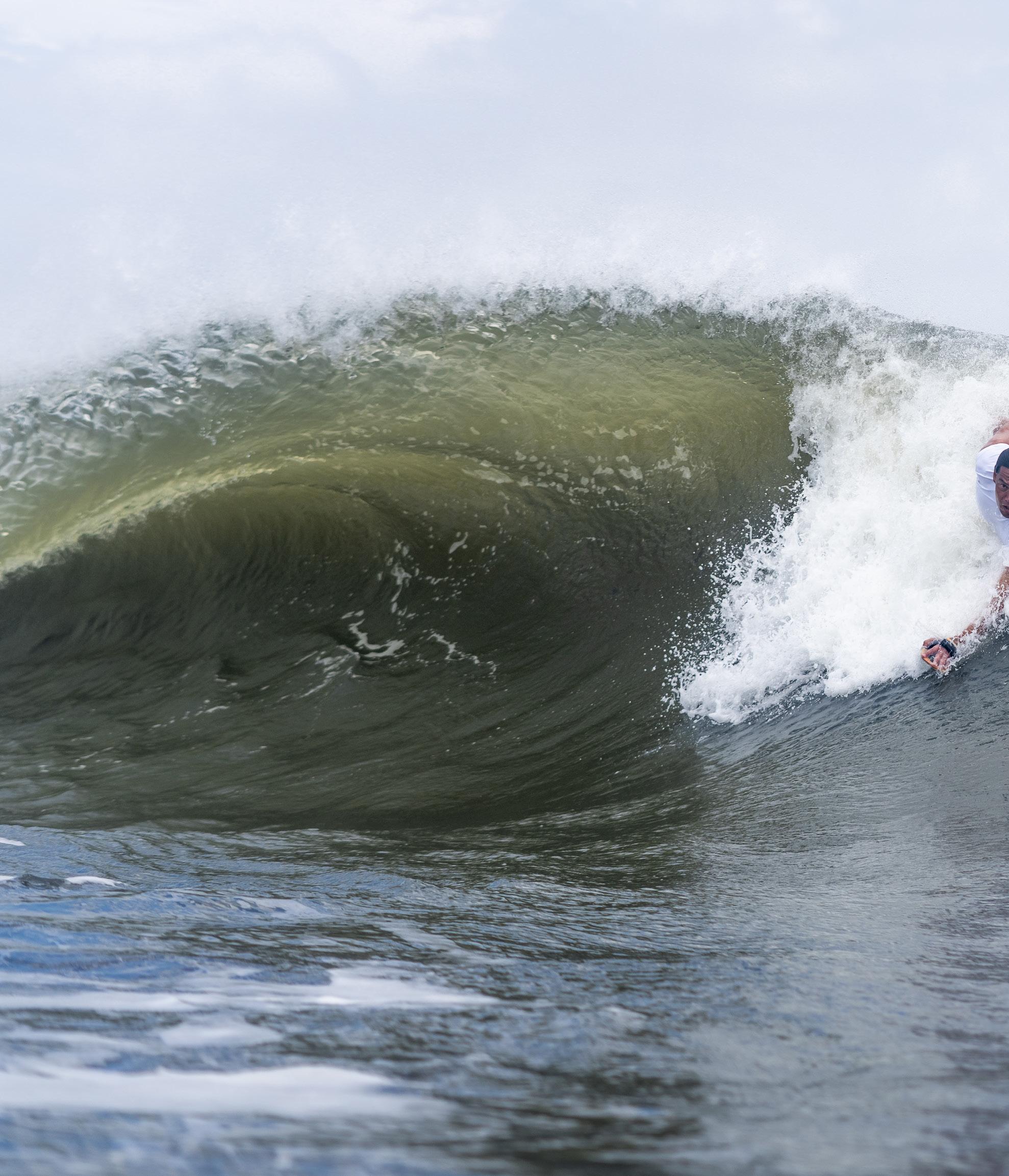 BEN WEI
BEN WEI
10 Bodysurfer Magazine
PHOTO: SEAN EVANS @ WATERWORKMEDIA

www.bodysurfermagazine.com 11
In ‘Greenough fashion’, I also had a great run of experimenting with ways to film tube riding using a GoPro and a back mount.
My first handplane when I was 12 had a single fin on it which helped me to navigate around the face with control even with low bodysurfing skills. So it made sense to start using fins on my foam and fiberglass designs.
People can scoff all they want at fins on a handplane but there is no argument. You can hold a higher line in the barrel creating more speed which drives you out of the barrel rather than just sliding down the face to be eaten by the lip for a momentary barrel vision.
The ones that are against it are probably the ones who don’t know how to attach fins to the board.
Of course for shorebreak that closes out in inches of water, with no chance of coming out of the barrel, there is no use for fins.
On a surfboard there is no drive without fins, finless designs slide along without drag, but just keep a degree of control on the face, and have a limit to how high of a line you can hold. It’s simple physics…
A highly skilled bodysurfer doesn’t need a handplane at all because of advanced body positioning.
We’re really intrigued about the hydrofoil handplane project, how did you start to think about that and how has it progressed?
The hydrofoils are simply magic on gutless waves.
I had at first built a small two handed paipo with a hand-foiled wooden hydrofoil just to see if I could. I tested it on one foot longboard waves in front of my house, and the thing moved along barely needing any wave energy, it was freaky.
Next, ‘DMC Fins’, Don McCredie asked me to make him a hydrofoil handplane using his DMC handplane outline.
I did, and it worked. It had tons of lift, too much for my taste, considering that you only had the leverage of one hand to control it.
Next I came up with a new construction technique, copied and scaled down existing surf foil templates and made the entire assembly and board out of wood that was hand shaped/foiled and laminated in fiberglass.
To this day it is still one of the most successful experiments in my life.
It’s not a board for barrels, it’s made for fat, open faced high tide conditions that you would usually need a 9 foot plus longboard to ride.
Supernatural energy efficiency and glide.
They don’t fly out of the water like a standup foil, but once moving they never sink below the surface.
It sounds pretty exciting, have you tried it in big waves and do you think it is possible to get the speed up with one to attempt bigger waves?
The main reason that I make the hydrofoil paipos and handplanes is to provide lift, glide and speed on small or slower surf.
For me, in bigger surf it’s more about killing the speed for control, and attempting to sit deeper in the water so I don’t see using them in big surf, you’d probably go flying out of control…
You’ll be commentating for the next Olympics? What do you think about bodysurfing in the Olympics?
I’m hoping that they put me in again as technical beach announcer for the 2nd Olympics surfing.
I don’t think that it’s out of the question to see Olympic bodysurfing, since the core sport of surfing is in to stay but it is hard to distinguish and judge the maneuvers of bodysurfing, unless all the competitors are Mike Stewart haha!
12 Bodysurfer Magazine
BEN WEI @ BENWEI5050
You’ve done a lot of commentating for WSL events, I remember watching one when you mentioned that you’d been bodysurfing in your break! Are there many of the surfers on tour that bodysurf too?
Yes, I almost always bring my DMC Repellor fins and my bodysurfing gear on every trip, but rarely do I see any of the competitors out in the water without their boards.
Finally, what’s your funniest wipeout or one you might’ve seen?
My funniest wipeout bodysurfing, (kinda funny), was when I had to ditch my CosmicTransporter 4 fin
paipo in the barrel approaching 3 inch deep water. The board became a piece of the lip and smacked me in the face, my lip blew up like a cartoon!

Thanks Ben, we’re going to have to order one of your hydrofoils to try out!
You can follow, message and order a board from Ben on instagram @benwei5050
www.bodysurfermagazine.com 13
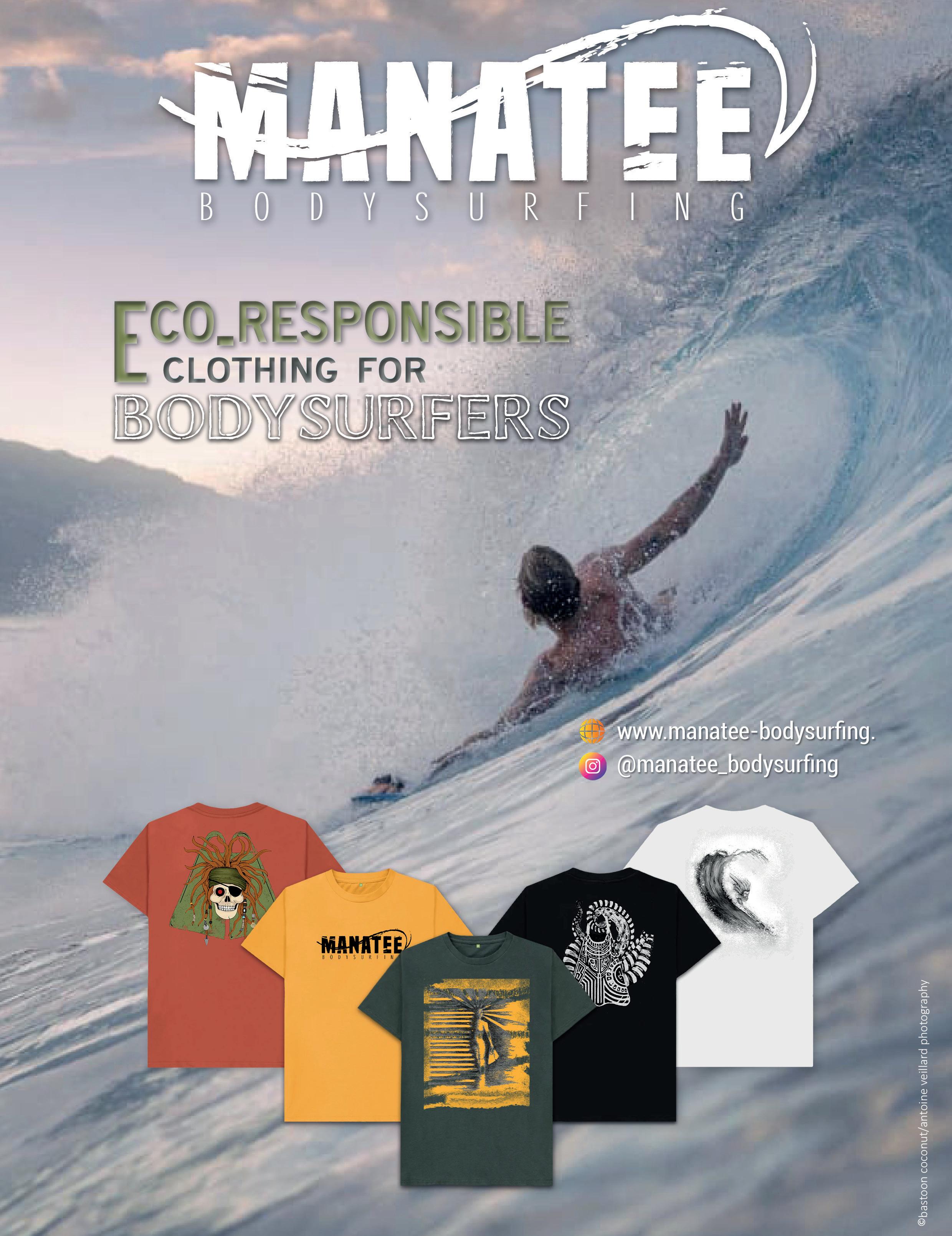
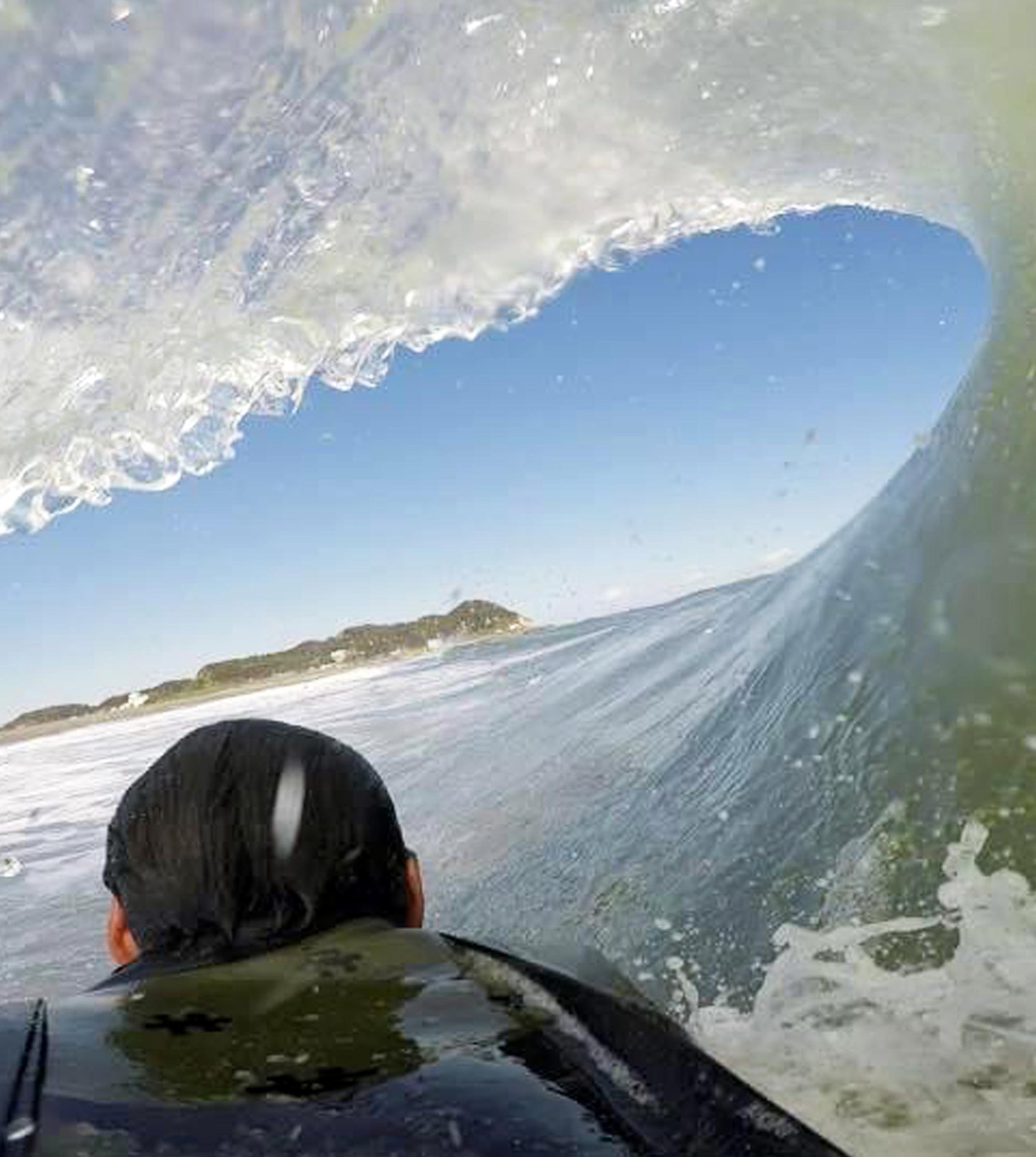
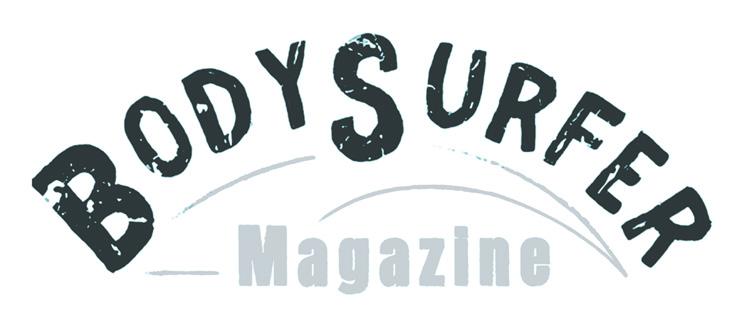
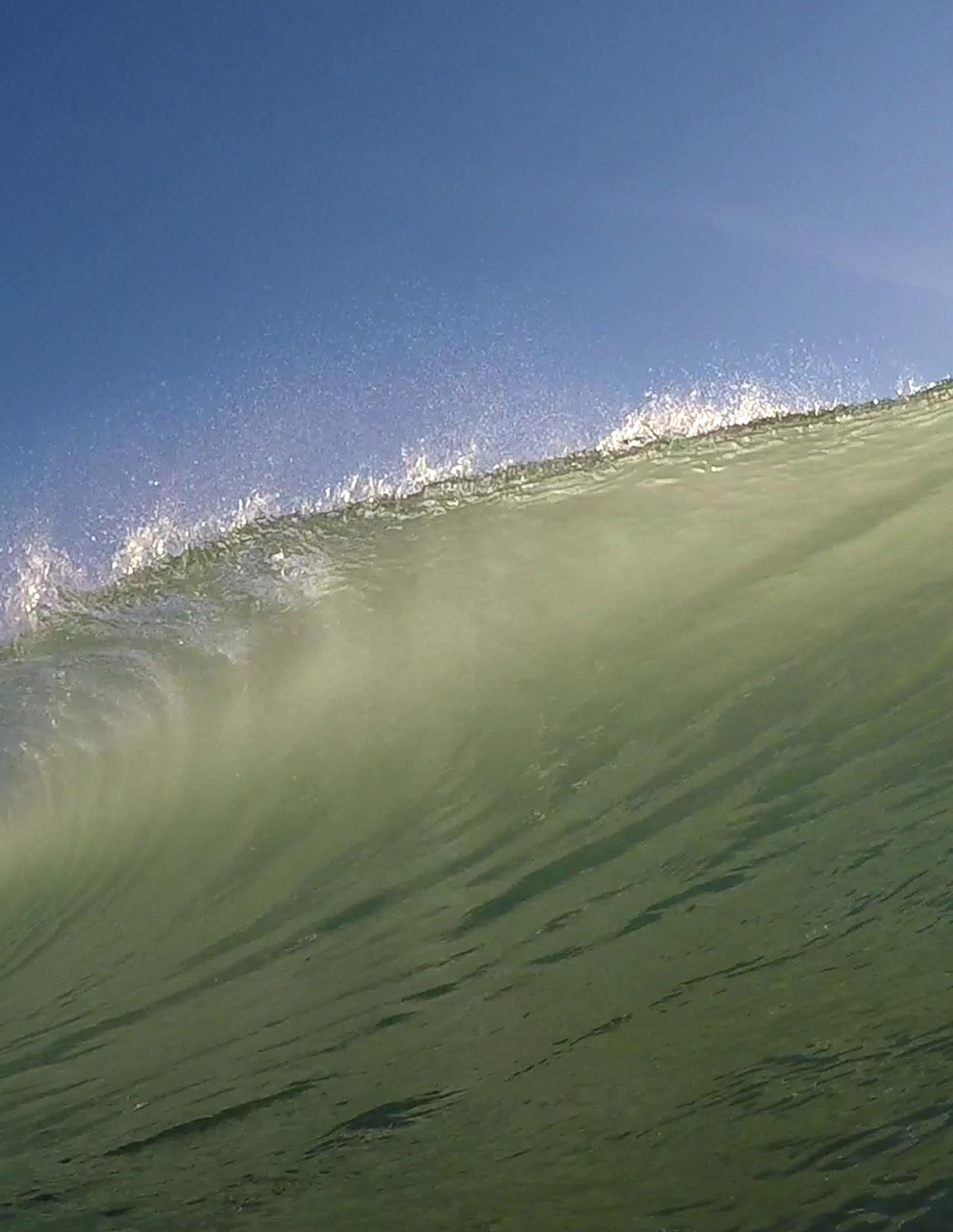


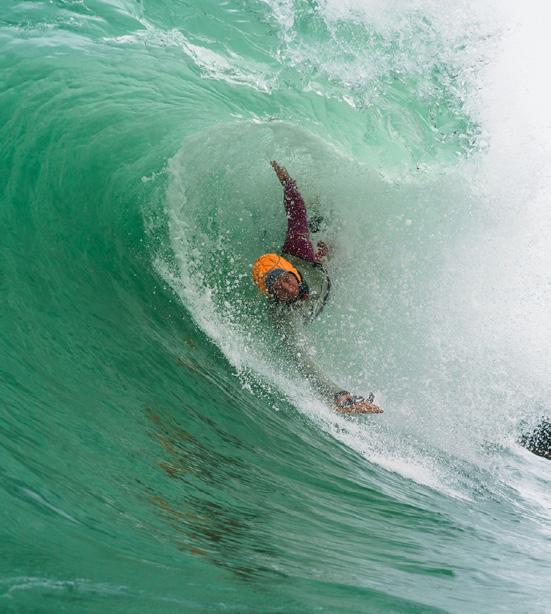

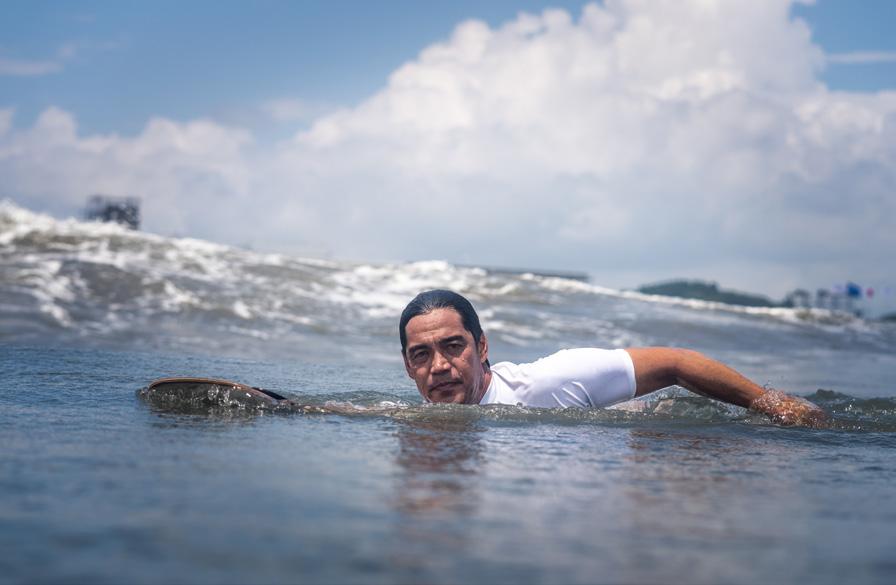
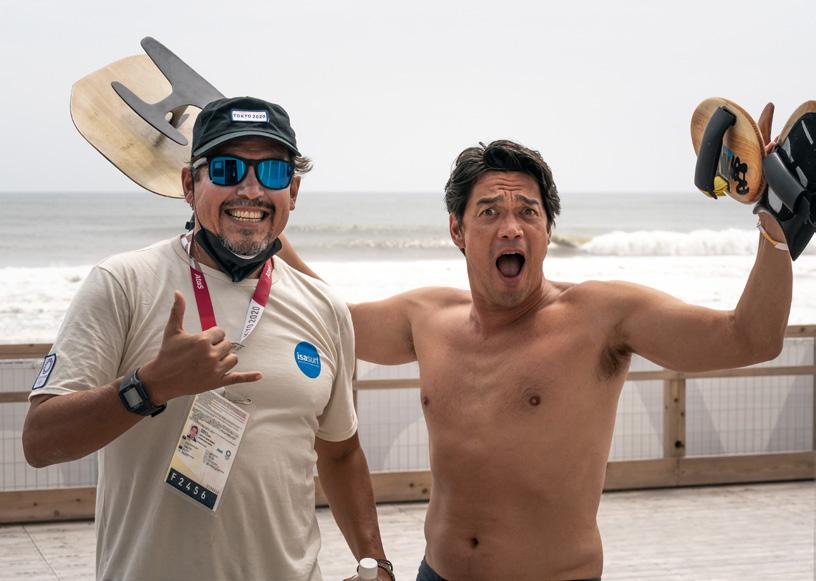



 BEN WEI
BEN WEI



 BEN WEI
BEN WEI



